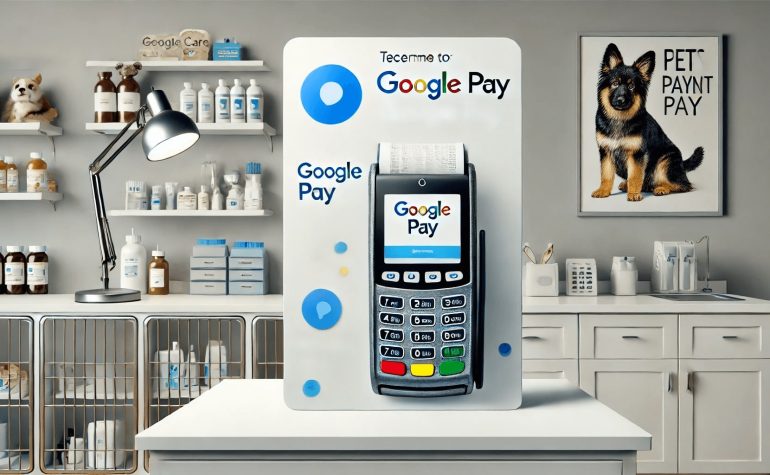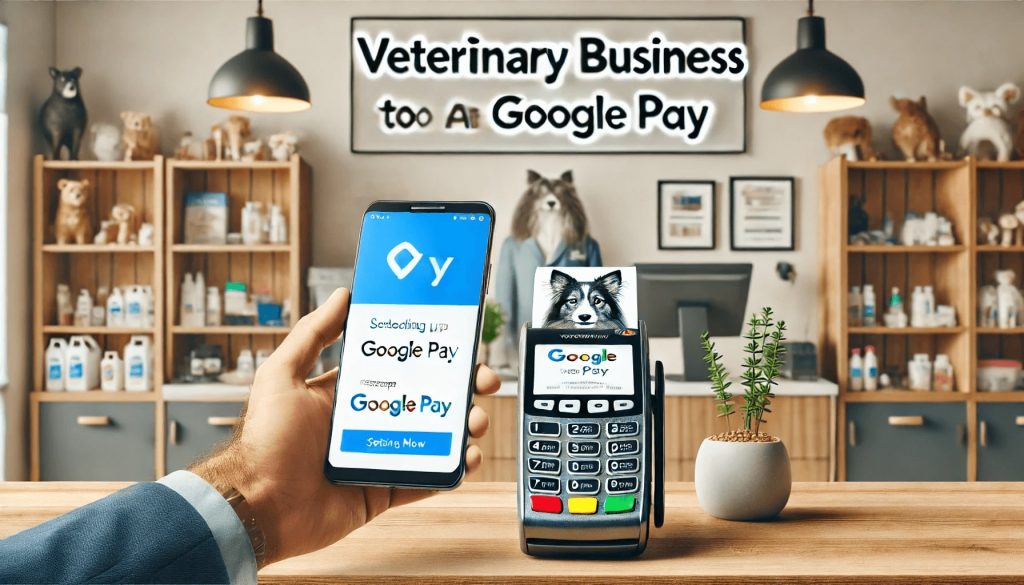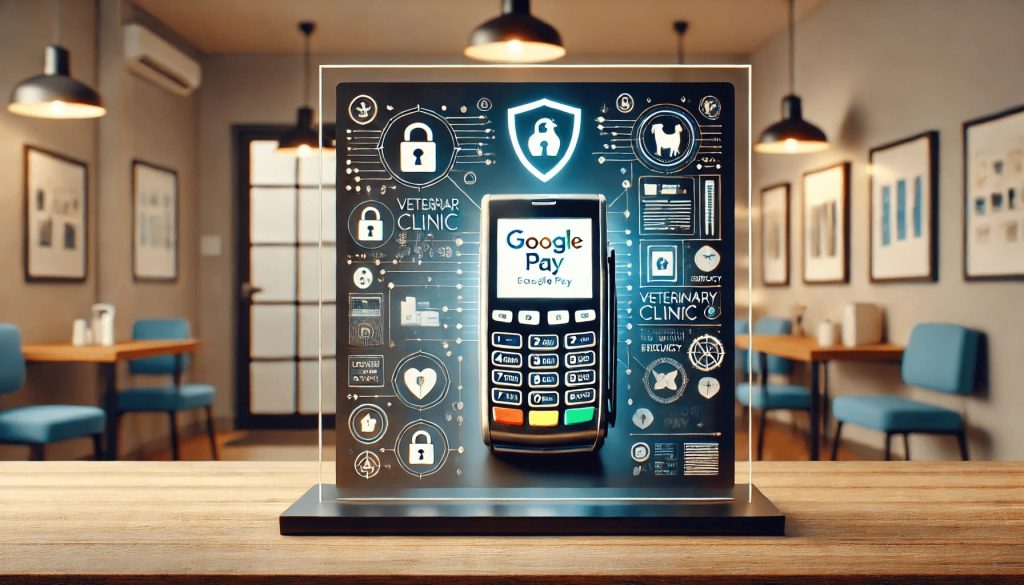
By alphacardprocess October 5, 2024
In today’s digital age, it is crucial for businesses to adapt to the changing landscape of payment options. One such option that has gained significant popularity is Google Pay. Google Pay is a digital wallet platform that allows users to make payments using their smartphones. As a veterinary business owner, accepting Google Pay can provide numerous benefits and enhance the overall customer experience.
This comprehensive guide will walk you through the process of accepting Google Pay for your veterinary business, from setting it up to troubleshooting common issues.
Benefits of Accepting Google Pay for Veterinary Businesses
Accepting Google Pay can offer several advantages for veterinary businesses. Firstly, it provides a convenient and seamless payment experience for your customers. With just a few taps on their smartphones, they can easily make payments for veterinary services, eliminating the need for carrying cash or credit cards. This convenience can lead to increased customer satisfaction and loyalty.
Secondly, accepting Google Pay can help streamline your payment processes. Traditional payment methods, such as cash or credit cards, often involve manual handling and processing. By accepting Google Pay, you can automate the payment process, reducing the chances of errors and saving time for both your staff and customers.
Furthermore, Google Pay offers enhanced security features. It utilizes tokenization technology, which replaces sensitive payment information with unique tokens, ensuring that customer data is protected. This can help alleviate concerns about data breaches and fraud, providing peace of mind to both you and your customers.
Setting Up Google Pay for Your Veterinary Business

To start accepting Google Pay, you need to set up a Google Pay account for your veterinary business. Follow these steps to get started:
- Download the Google Pay app: Visit the Google Play Store or Apple App Store and download the Google Pay app on your smartphone.
- Sign in or create an account: If you already have a Google account, sign in using your credentials. Otherwise, create a new account by providing the necessary information.
- Add your business details: Once you’re signed in, navigate to the settings section and add your veterinary business details, including your business name, address, and contact information.
- Link your bank account: To receive payments, you need to link your business bank account to your Google Pay account. Follow the instructions provided in the app to complete this process.
- Verify your business: Google may require you to verify your veterinary business to ensure its legitimacy. This typically involves providing additional documentation, such as business licenses or tax identification numbers.
Integrating Google Pay into Your Veterinary Business Website
Integrating Google Pay into your veterinary business website can provide a seamless payment experience for your online customers. Follow these steps to integrate Google Pay into your website:
- Choose a payment processor: Select a payment processor that supports Google Pay integration. Popular options include Stripe, Braintree, and Square.
- Set up an account with the payment processor: Sign up for an account with the chosen payment processor and follow their instructions to set up your veterinary business profile.
- Enable Google Pay integration: Once your account is set up, navigate to the settings or integrations section and enable Google Pay integration. This will generate the necessary code or plugin to integrate Google Pay into your website.
- Add the code or plugin to your website: Depending on your website platform, you may need to add the generated code or install the plugin provided by the payment processor. Consult the documentation or support resources of your website platform for specific instructions.
- Test the integration: After adding the code or plugin, test the Google Pay integration on your website to ensure that it is functioning correctly. Make a test payment using Google Pay to verify that the transaction is processed successfully.
Accepting Google Pay In-Person at Your Veterinary Clinic
In addition to accepting Google Pay online, you can also offer this payment option to your customers who visit your veterinary clinic in person. Here’s how you can accept Google Pay in-person:
- Obtain a compatible payment terminal: To accept Google Pay in-person, you need a payment terminal that supports Near Field Communication (NFC) technology. NFC-enabled terminals allow customers to make contactless payments using their smartphones.
- Set up the payment terminal: Follow the instructions provided by the payment terminal provider to set up the device. This typically involves connecting it to your clinic’s network and configuring the necessary settings.
- Enable NFC payments: Once the payment terminal is set up, ensure that NFC payments are enabled. This will allow customers to make payments using Google Pay by simply tapping their smartphones on the terminal.
- Train your staff: Educate your staff on how to process Google Pay payments using the payment terminal. Train them on the steps involved, such as selecting the Google Pay option on the terminal and guiding customers through the payment process.
Promote Google Pay as a payment option: Inform your customers about the availability of Google Pay as a payment option at your veterinary clinic. Display signage or inform them verbally during their visit to encourage them to use Google Pay for their payments.
Ensuring Security and Privacy with Google Pay for Veterinary Businesses

Security and privacy are paramount when accepting digital payments. Fortunately, Google Pay incorporates several features to ensure the safety of transactions and customer data. Here are some measures you can take to further enhance security and privacy:
- Educate your staff and customers: Train your staff on best practices for handling Google Pay transactions and emphasize the importance of safeguarding customer data. Educate your customers about the security features of Google Pay and reassure them that their information is protected.
- Implement strong authentication measures: Require customers to authenticate their Google Pay transactions using biometric authentication methods, such as fingerprint or facial recognition. This adds an extra layer of security and prevents unauthorized access to their payment information.
- Regularly update your systems: Keep your payment terminals, website plugins, and other systems up to date with the latest security patches and updates. Regularly check for updates from your payment processor and apply them promptly to mitigate any potential vulnerabilities.
- Monitor transactions for suspicious activity: Implement a system to monitor transactions for any unusual or suspicious activity. Set up alerts or notifications for large or frequent transactions, which can help identify potential fraudulent activity.
- Comply with data protection regulations: Familiarize yourself with data protection regulations, such as the General Data Protection Regulation (GDPR) or the California Consumer Privacy Act (CCPA), and ensure that your veterinary business is compliant. This includes obtaining customer consent for data collection and implementing appropriate data protection measures.
Promoting Google Pay as a Payment Option for Your Veterinary Business
Once you have set up Google Pay for your veterinary business, it is essential to promote it as a payment option to your customers. Here are some strategies to effectively promote Google Pay:
- Update your website and marketing materials: Add Google Pay logos and information to your website, social media profiles, and marketing materials. Highlight the convenience and security benefits of using Google Pay for payments.
- Train your staff to promote Google Pay: Instruct your staff to inform customers about the availability of Google Pay as a payment option. Train them to explain the benefits and guide customers through the payment process if needed.
- Offer incentives for using Google Pay: Encourage customers to use Google Pay by offering incentives, such as discounts or loyalty points. This can incentivize them to adopt this payment method and increase its usage.
- Collaborate with other businesses: Partner with other local businesses, such as pet stores or grooming salons, to promote Google Pay collectively. Cross-promote each other’s businesses and highlight the convenience of using Google Pay for transactions.
- Leverage social media and online advertising: Utilize social media platforms and online advertising to reach a wider audience. Create engaging content that showcases the benefits of using Google Pay and target specific demographics that are likely to use this payment method.
Troubleshooting Common Issues with Google Pay for Veterinary Businesses
While Google Pay is generally a reliable payment option, you may encounter some common issues. Here are a few troubleshooting tips for resolving these issues:
- Payment failures: If a customer’s payment fails, ensure that their Google Pay app is up to date and that they have a stable internet connection. If the issue persists, ask the customer to contact their bank or Google Pay support for further assistance.
- Compatibility issues: Ensure that your payment terminals or website plugins are compatible with Google Pay. Check for any updates or compatibility issues with your payment processor and contact their support if needed.
- Refunds and chargebacks: Familiarize yourself with the refund and chargeback policies of your payment processor. In the event of a refund or chargeback request, follow the necessary procedures to process it promptly and communicate with the customer to resolve any concerns.
- Technical glitches: If you encounter any technical glitches with your payment terminals or website integration, contact your payment processor’s support team for assistance. They can guide you through troubleshooting steps or provide necessary updates to resolve the issue.
- Customer support: Ensure that your staff is trained to handle customer inquiries or issues related to Google Pay. Provide them with the necessary resources and contact information for Google Pay support to assist customers effectively.
Frequently Asked Questions
Q.1: Is Google Pay safe for veterinary businesses?
Yes, Google Pay incorporates advanced security features, such as tokenization, to protect customer data and transactions. It is considered a secure payment option for veterinary businesses.
Q.2: Can I accept Google Pay payments without an internet connection?
No, an internet connection is required to process Google Pay payments. Ensure that you have a stable internet connection at your veterinary clinic or for your website.
Q.3: Can I accept Google Pay payments from customers outside my country?
Yes, Google Pay supports international transactions. However, ensure that your payment processor and bank account can handle international payments and comply with any applicable regulations.
Q.4: Are there any fees associated with accepting Google Pay?
Fees may vary depending on your payment processor and the specific terms of your agreement. Consult with your payment processor to understand any fees associated with accepting Google Pay.
Q.5: Can I integrate Google Pay into my existing payment system?
Yes, Google Pay can be integrated into your existing payment system through compatible payment processors. Consult with your payment processor to ensure compatibility and follow their integration instructions.
Conclusion
Accepting Google Pay for your veterinary business can provide numerous benefits, including convenience, streamlined payment processes, enhanced security, and improved customer satisfaction. By following the steps outlined in this comprehensive guide, you can set up Google Pay for your veterinary business, integrate it into your website, accept it in-person, and troubleshoot common issues. Embrace the digital payment revolution and offer your customers a seamless and secure payment experience with Google Pay.